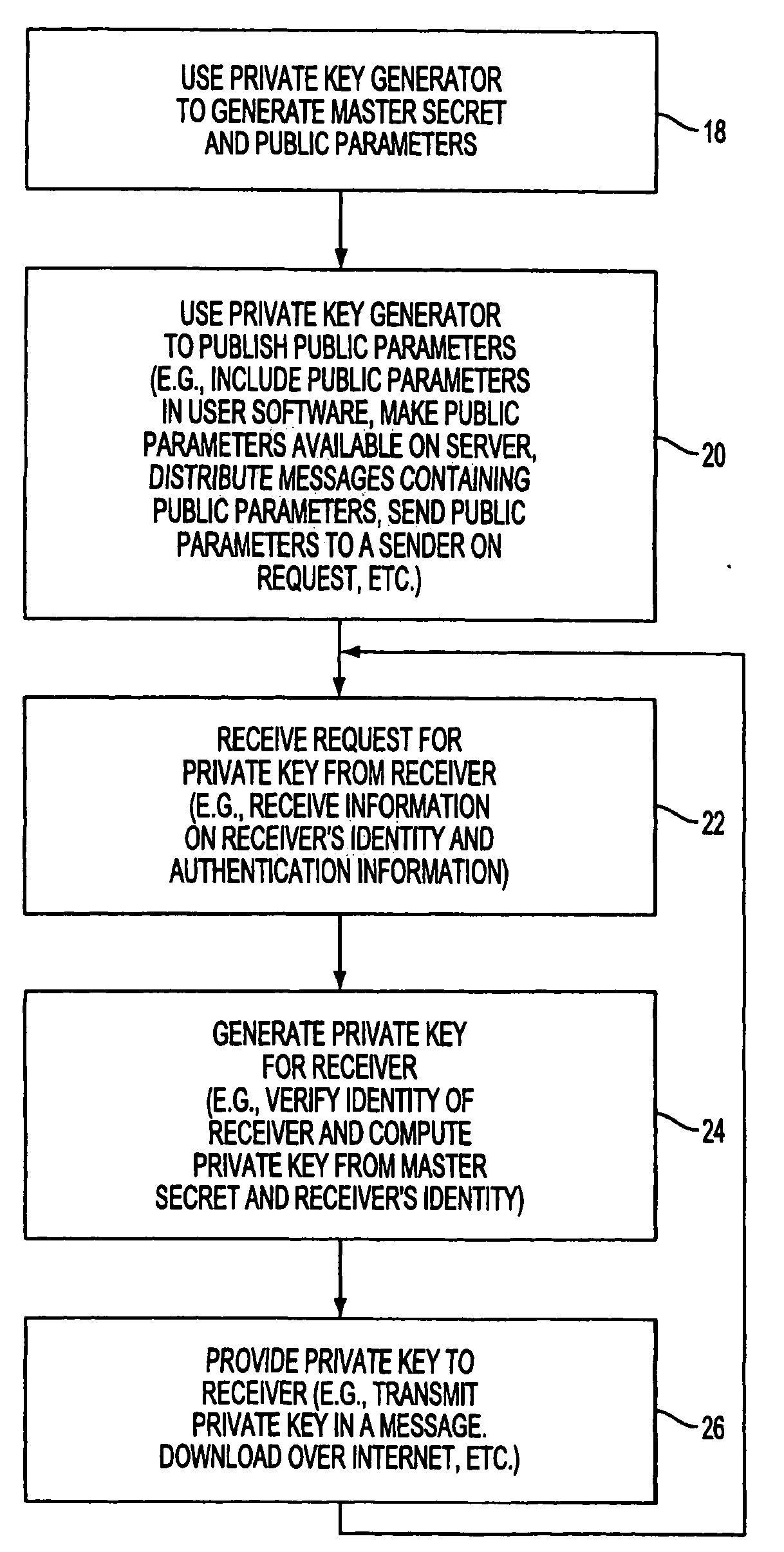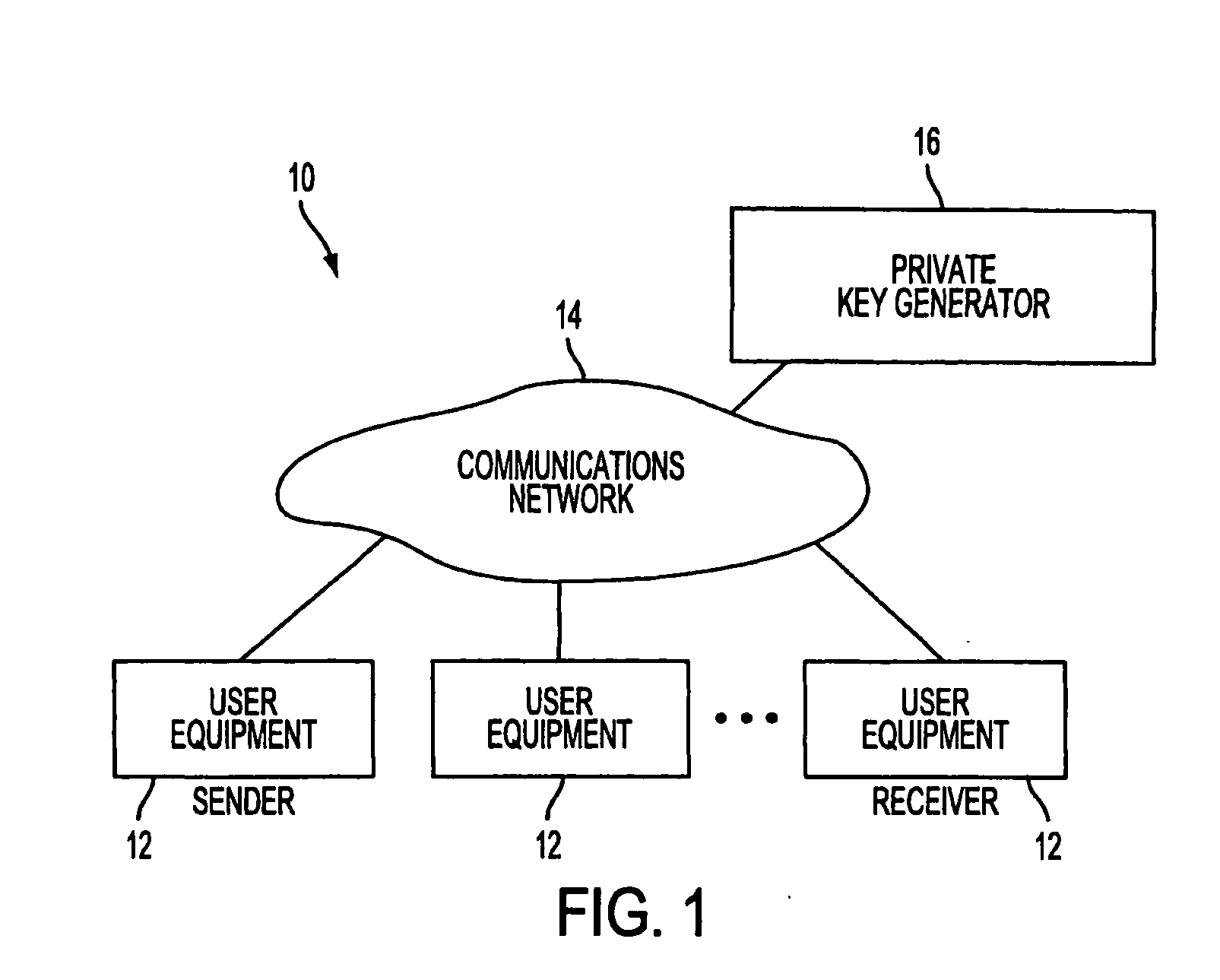Identity-based encryption system
a technology of identity-based encryption and encryption algorithm, applied in the field of identity-based encryption schemes, can solve the problems of inability to access on-line public key servers, inability to use public key encryption algorithms, and inability to sender's portable computers to be online, so as to prevent duplication
- Summary
- Abstract
- Description
- Claims
- Application Information
AI Technical Summary
Benefits of technology
Problems solved by technology
Method used
Image
Examples
Embodiment Construction
[0034]A portion of an illustrative identity-based cryptographic system 10 in accordance with the present invention is shown in FIG. 1. System 10 allows users at various locations to communicate securely using an identity-based encryption scheme. The users in the system may be individuals, organizations, or any other suitable parties or entities. Users may communicate with each other using user equipment devices 12. Equipment 12 may, for example, include computing equipment such as a personal computers, portable computers, mainframe computers, networked computers or terminals, telecommunications equipment, handheld computers or personal digital assistants, or cellular telephones. Multiple users may use the same device. For example, a group of users may share the use of a single computer terminal that is connected to a host computer in a local area network. These are merely illustrative examples of the type of platforms that the users of system 10 may use. User equipment 12 may be bas...
PUM
 Login to View More
Login to View More Abstract
Description
Claims
Application Information
 Login to View More
Login to View More - R&D
- Intellectual Property
- Life Sciences
- Materials
- Tech Scout
- Unparalleled Data Quality
- Higher Quality Content
- 60% Fewer Hallucinations
Browse by: Latest US Patents, China's latest patents, Technical Efficacy Thesaurus, Application Domain, Technology Topic, Popular Technical Reports.
© 2025 PatSnap. All rights reserved.Legal|Privacy policy|Modern Slavery Act Transparency Statement|Sitemap|About US| Contact US: help@patsnap.com



